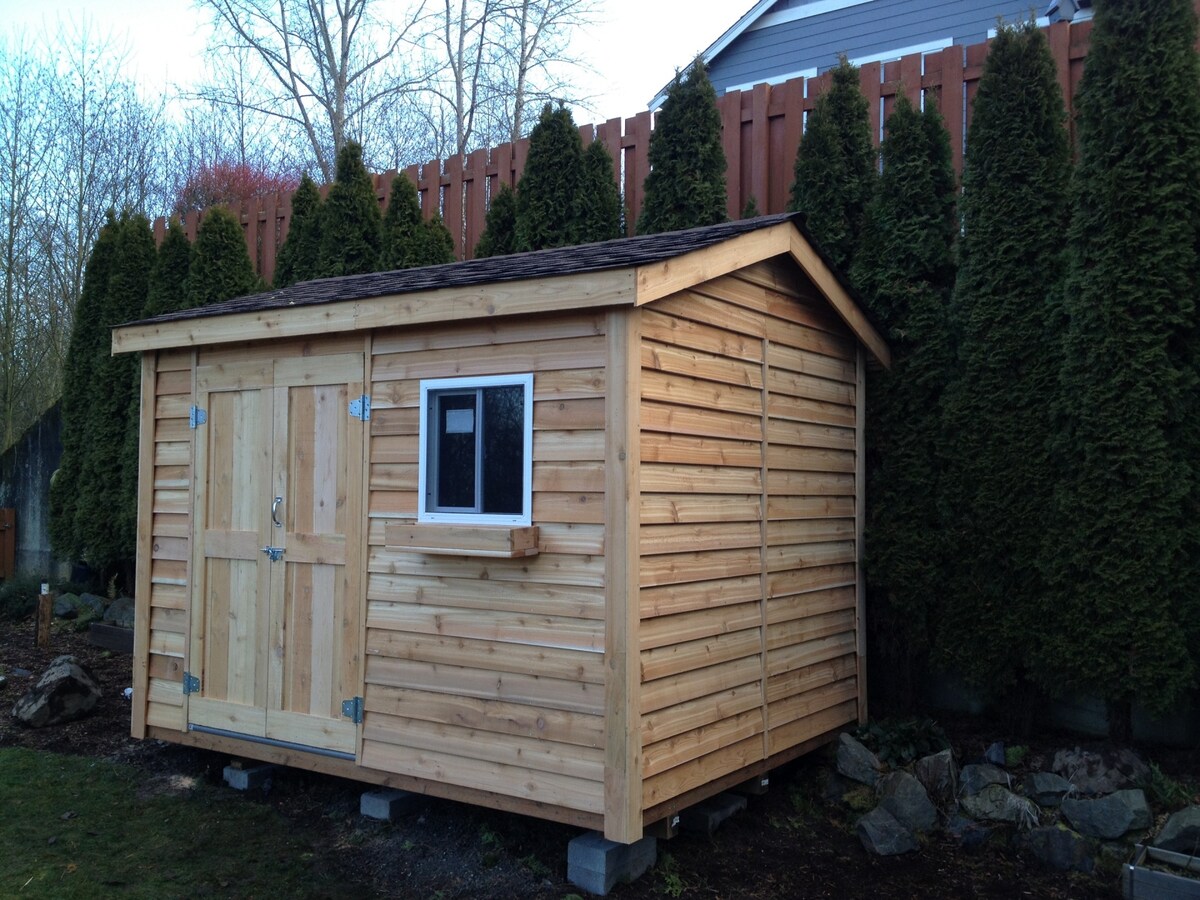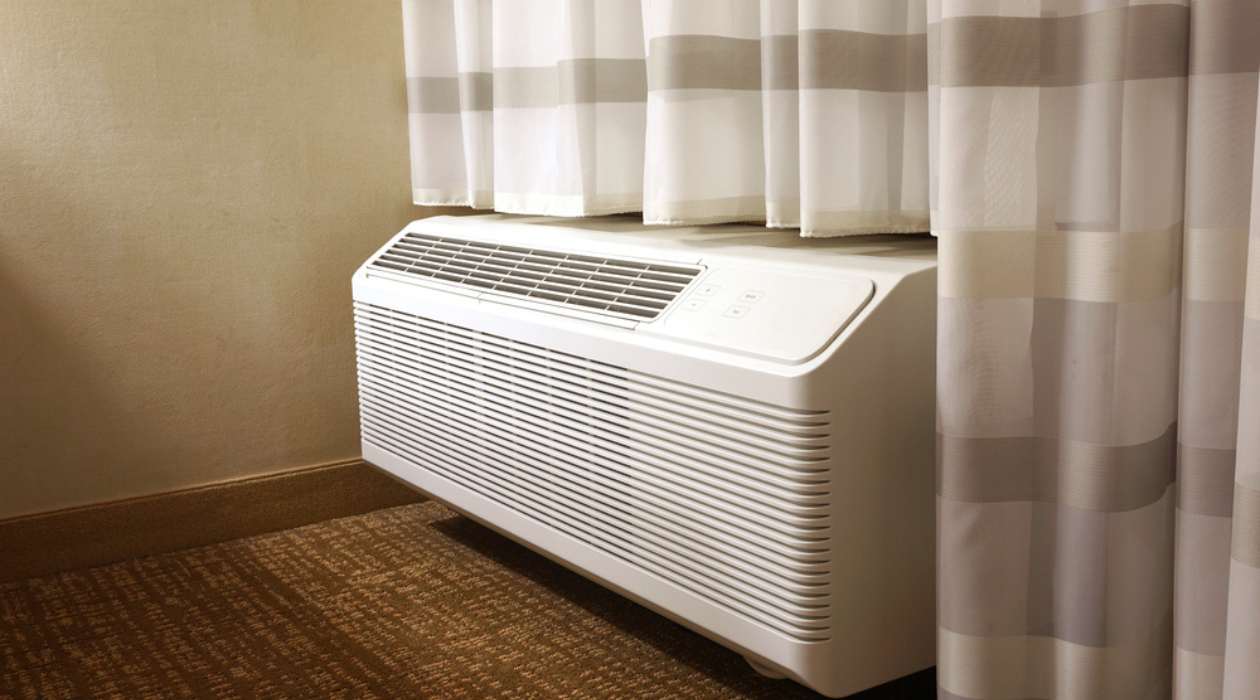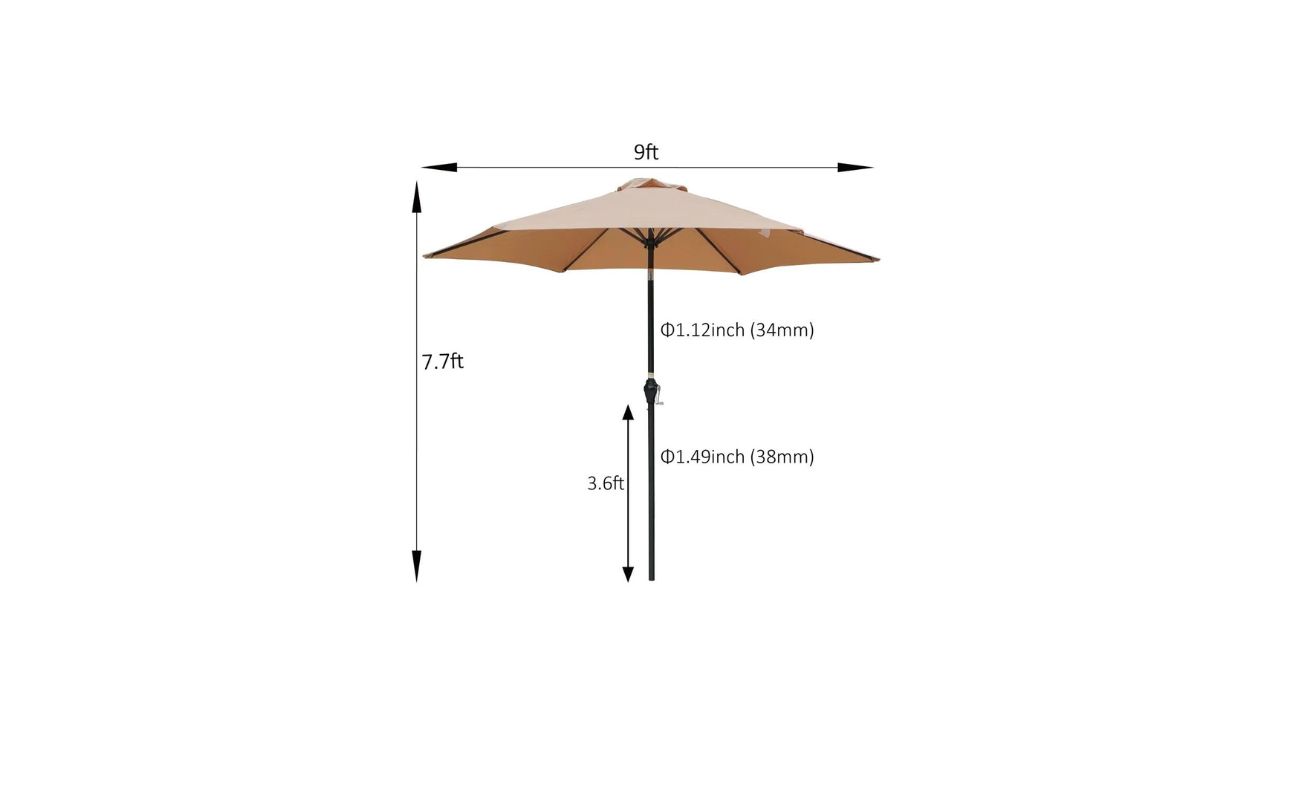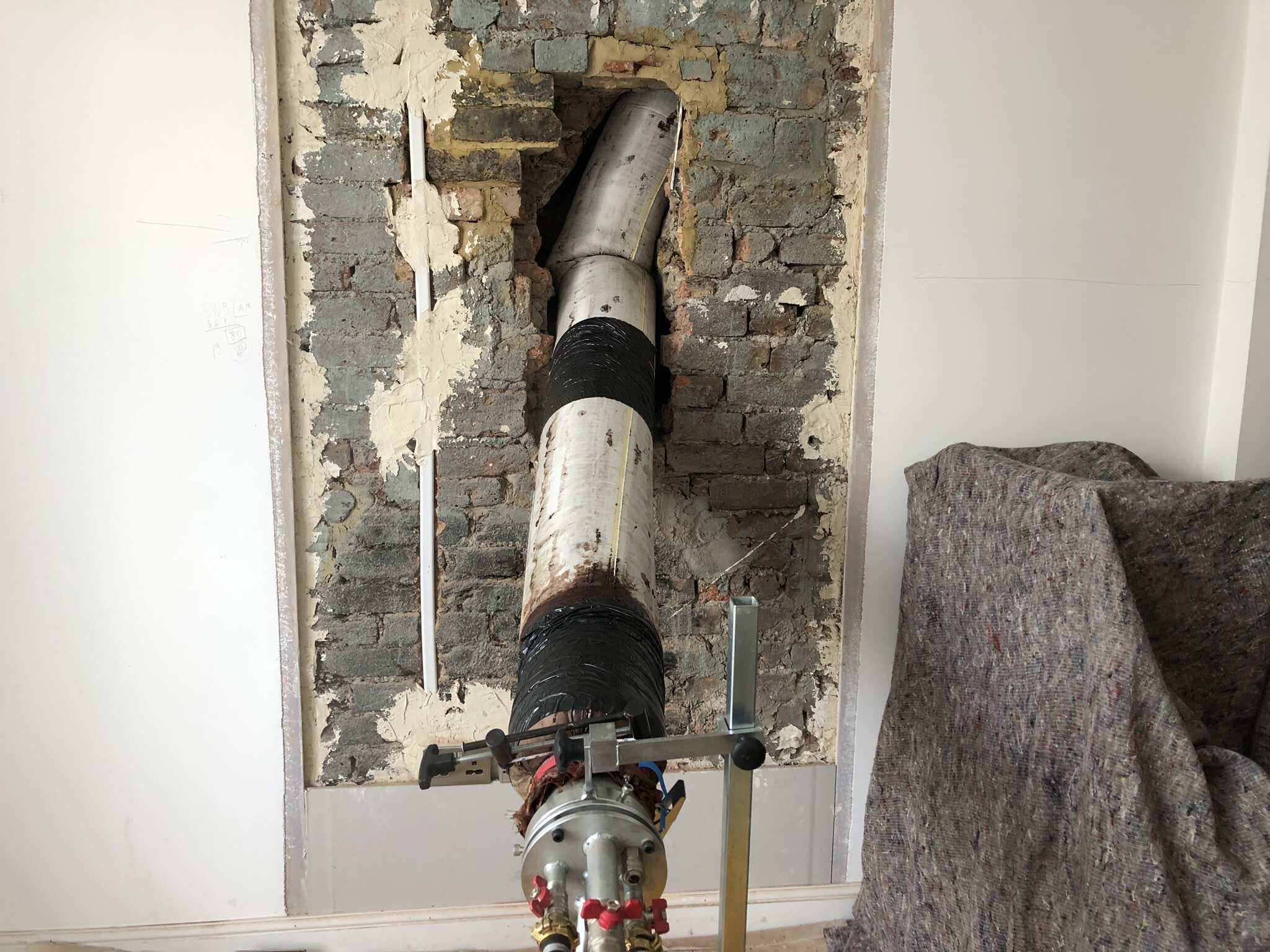

Articles
How Do I Know What Size Blinds I Need
Modified: January 5, 2024
Unsure what size blinds you need? Our informative articles have all the answers you're looking for. Discover the perfect fit for your windows today!
(Many of the links in this article redirect to a specific reviewed product. Your purchase of these products through affiliate links helps to generate commission for Storables.com, at no extra cost. Learn more)
Introduction
Welcome to our comprehensive guide on how to determine the perfect size blinds for your windows. Choosing the right blinds size is crucial to ensure a proper fit and achieve the desired functionality and aesthetics in your space. Whether you are looking to update your existing blinds or install new ones, understanding the process of measuring for blinds will help you make informed decisions and avoid costly mistakes.
Having the correct size of blinds not only ensures a neat and tailored appearance but also enables efficient light control, privacy, and insulation. In this article, we will walk you through the step-by-step process of measuring your windows for blinds and provide useful tips and considerations along the way.
Before we dive into the details, it’s important to note that there are two main types of blinds installations: inside mount and outside mount. The measurements required for each will vary slightly, and we will discuss the differences further on in this guide.
So, whether you are opting for sleek roller blinds, elegant Venetian blinds, or cozy Roman blinds, let’s get started on determining the right size of blinds for your windows.
Key Takeaways:
- Properly measuring your windows for blinds is crucial to achieving a tailored look and functional light control. Inside and outside mount options offer flexibility, so choose based on your preferences and window characteristics.
- Consider the specific requirements of different types of blinds, such as roller, Venetian, and Roman blinds, to achieve the desired level of light control, privacy, and aesthetic appeal. Take accurate measurements and consult with professionals for a seamless fit and cohesive look within your space.
Measuring for Blinds
Measuring your windows correctly is the crucial first step in ensuring that your blinds fit perfectly. Here’s a step-by-step guide on how to measure for blinds:
- Gather the necessary tools: Before you begin, make sure you have a measuring tape, a pencil, and a notepad to record your measurements.
- Decide on inside or outside mount: Determine whether you want to install your blinds inside the window frame (inside mount) or on the outside of the frame (outside mount). This decision will impact how you take your measurements.
- Inside Mount: If you opt for an inside mount, start by measuring the width of the window frame from the inside edge. Measure at three points: the top, middle, and bottom. Record the narrowest measurement as the window’s width.
- Inside Mount (continued): Next, measure the height of the window frame from the inside top edge to the inside bottom edge. Again, take measurements at three points: left, center, and right. Note down the shortest measurement as the window’s height.
- Outside Mount: For an outside mount, you will need to measure the exact area you want your blinds to cover. Start by measuring the width of the window from the outer edge of the frame on the left side to the outer edge on the right side. Add any desired overlap to ensure privacy and light control.
- Outside Mount (continued): For the height, measure from the top of the window area to the desired endpoint, such as the bottom of the window or even beyond for a floor-length look. Again, consider any desired overlap.
- Take note of any obstructions: If your window has any obstructions, such as handles or window cranks, make sure to account for them in your measurements. This will ensure that your blinds fit properly and are not obstructed by these elements.
- Double-check your measurements: Once you have recorded your measurements, it’s essential to double-check them for accuracy. Mistakes in measurements can lead to ill-fitting blinds.
By following these steps and taking accurate measurements, you will lay the foundation for selecting blinds that will fit perfectly in your windows and enhance your space’s functionality and style.
Understanding Window Sizes
When it comes to blinds, understanding window sizes is essential in order to choose the right size blinds that will fit your windows perfectly. Here are some key terms and measurements related to window sizes:
- Window Width: This refers to the horizontal measurement of the window, usually measured from one side to the other. Window widths can vary, so it’s important to measure each window individually.
- Window Height: This refers to the vertical measurement of the window, typically measured from the top to the bottom. Just like window width, window height can vary and should be measured for each window separately.
- Rough Opening: The rough opening is the space in the wall where the window is installed. It includes the window frame and any spaces or gaps around the window. This measurement is important for outside mount blinds as it determines the size of the blinds needed to cover the entire window area.
- Frame Depth: Frame depth refers to the distance from the front of the window frame to the back. This measurement is crucial for inside mount blinds as it determines if there is enough space inside the window frame for the blind to be mounted.
It’s important to keep in mind that not all windows are created equal, and window sizes can vary depending on factors such as the age and style of your home. Therefore, it’s essential to measure each window individually to ensure proper fitting blinds.
Additionally, it’s worth noting that window sizes can sometimes be labeled as “standard” or “custom.” Standard window sizes are pre-determined and commonly found in many households, making it easier to find blinds that fit. On the other hand, custom window sizes are specific to your home and may require special order blinds or custom-made solutions.
Understanding window sizes will help you communicate effectively with blind manufacturers or retailers and make informed choices when selecting blinds for your windows. By taking accurate measurements and considering the different aspects of window sizes, you will have a solid foundation for finding the right blinds that not only fit perfectly but also enhance the aesthetic appeal of your space.
Inside Mount vs. Outside Mount
When it comes to installing blinds, you have the option of choosing between inside mount and outside mount. Understanding the differences between the two can help you make an informed decision based on your preferences and the specific characteristics of your windows. Let’s delve into the details of each:
Inside Mount:
An inside mount refers to installing blinds within the window frame. This creates a clean and streamlined look as the blinds fit snugly inside the frame. Here are a few key points to consider regarding inside mount:
- Aesthetics: Inside mount blinds provide a polished and tailored appearance. They can enhance the overall aesthetic appeal of the window and complement the existing architecture and design of the room.
- Space Saving: Installing blinds inside the window frame allows you to maximize the use of your wall space. This is particularly beneficial if you have limited wall space or if you want to maintain a minimalistic and uncluttered look.
- Light Control and Privacy: Inside mount blinds offer effective light control and privacy as they fit closely to the window, minimizing light gaps and providing a barrier against prying eyes.
- Considerations: It’s important to note that inside mount blinds require a certain amount of space within the window frame for proper installation. Be sure to measure the frame depth and check for any obstructions that might affect the installation process.
Outside Mount:
An outside mount involves installing blinds on the wall or window frame, covering the entire window area. This option offers its own set of advantages and considerations:
- Flexibility: Outside mount blinds can be installed on windows of any size and shape. They are versatile and can be customized to fit your specific requirements.
- Illusion of Size: Installing blinds outside the window frame can create an illusion of larger windows and make a small room appear more spacious and airy.
- Light Control and Privacy: Outside mount blinds can provide excellent light control and privacy, especially when correctly measured and installed to overlap the window edges.
- Considerations: When opting for outside mount blinds, it’s crucial to measure the appropriate area that you want the blinds to cover, accounting for any desired overlaps, obstructions, or architectural features around the window.
Ultimately, the choice between inside mount and outside mount blinds depends on your personal preferences, the style of your space, and the specific characteristics of your windows. Consider the aesthetic appeal, functionality, and measurement requirements for each option before making a decision.
Considerations for Different Types of Blinds
When selecting blinds for your windows, it’s important to consider the specific characteristics and requirements of each type of blind. Different types of blinds offer unique features and functionality, so understanding these considerations will help you make an informed choice. Let’s explore some popular types of blinds and what to keep in mind when selecting them:
Roller Blinds:
Roller blinds are simple yet versatile window coverings that consist of a fabric panel mounted on a roller mechanism. Here are some key considerations:
- Fabric Thickness: The thickness of the roller blind fabric will affect the amount of light and privacy it provides. Thicker fabrics are ideal for rooms where you want maximum light blockage and privacy, such as bedrooms or media rooms.
- Translucent vs. Opaque: Roller blinds come in translucent and opaque options. Translucent fabrics allow some light to filter through while maintaining privacy, while opaque fabrics block out light more effectively. Consider the level of privacy and light control you desire when choosing between the two.
- Valance Options: Roller blinds often come with different valance options, such as a cassette or a fabric-wrapped valance. Consider the valance style that best complements your decor and desired aesthetic appeal.
Venetian Blinds:
Venetian blinds feature horizontal slats that can be adjusted to control light and privacy. Here are a few things to consider:
- Slat Width: Venetian blinds come in different slat widths, typically ranging from 1 inch to 2.5 inches. The slat width can affect the overall look and feel of the blinds. Thinner slats offer a more modern and sleek look, while wider slats provide a more traditional and substantial appearance.
- Material Options: Venetian blinds are available in various materials, including aluminum, wood, and faux wood. Each material has its own advantages and considerations, such as durability, moisture resistance, and style compatibility.
- Cord or Cordless: Consider whether you prefer Venetian blinds with cords or cordless operation for ease of use and child safety.
Read more: What Size Humidifier Do I Need
Roman Blinds:
Roman blinds have soft fabric panels that fold up when the blinds are raised. Consider the following when choosing Roman blinds:
- Fabric Patterns and Textures: Roman blinds offer a wide range of fabric options, including patterns, textures, and colors. Consider the overall style and theme of your space to choose a fabric that complements your decor and creates the desired ambiance.
- Fold Styles: Roman blinds come in different fold styles, such as flat, hobbled, or waterfall folds. Each fold style creates a unique look and can impact the appearance of the blinds when raised or lowered.
- Lining Options: Roman blinds can be lined with various materials, such as blackout lining for better light control or thermal lining for improved insulation. Consider the desired level of light blockage and energy efficiency when selecting the appropriate lining.
These considerations are just a starting point. Depending on the type of blinds you choose, there may be additional factors to keep in mind, such as motorization options, maintenance requirements, and installation considerations. Research and consult with experts to ensure you make an informed decision based on your specific needs and preferences.
Conclusion
Choosing the right size blinds for your windows is a crucial step in achieving a harmonious balance of functionality and aesthetics in your space. By following the proper measuring techniques and considering the specific characteristics of your windows, you can ensure a perfect fit for your blinds.
Remember to take accurate measurements, whether you opt for an inside mount or outside mount installation. Inside mount blinds provide a clean and tailored look, while outside mount blinds offer more flexibility in covering the window area. Understanding window sizes and the differences between inside mount and outside mount installations will help you make an informed decision based on your preferences and the specific characteristics of your windows.
Additionally, considering the specific requirements of different types of blinds, such as roller blinds, Venetian blinds, and Roman blinds, will help you select the best option for your space. Consider factors like fabric thickness, material options, and fold styles to achieve the desired level of light control, privacy, and aesthetic appeal.
By carefully considering these factors and taking accurate measurements, you can confidently select the perfect size blinds that will elevate the functionality and visual appeal of your windows. Whether you are looking for blinds to enhance your bedroom’s privacy, control sunlight in your living room, or add style to your office, finding the right size will ensure a seamless fit and create a cohesive look within your space.
Remember, when in doubt, consult with professionals or experts in the field to receive guidance and advice tailored to your specific needs. With the right measurements and an understanding of your options, you can create a stunning window treatment that transforms your space and enhances your overall home decor.
Frequently Asked Questions about How Do I Know What Size Blinds I Need
Was this page helpful?
At Storables.com, we guarantee accurate and reliable information. Our content, validated by Expert Board Contributors, is crafted following stringent Editorial Policies. We're committed to providing you with well-researched, expert-backed insights for all your informational needs.













